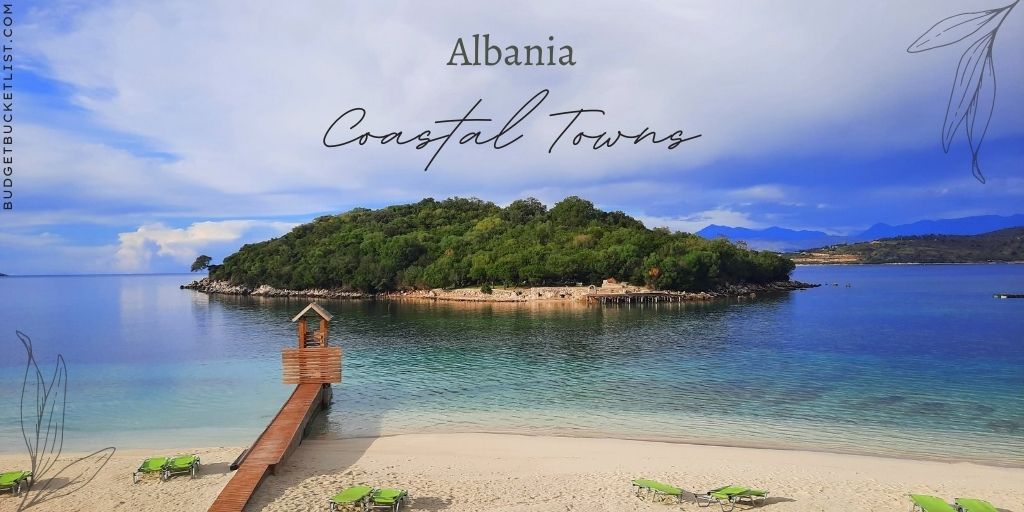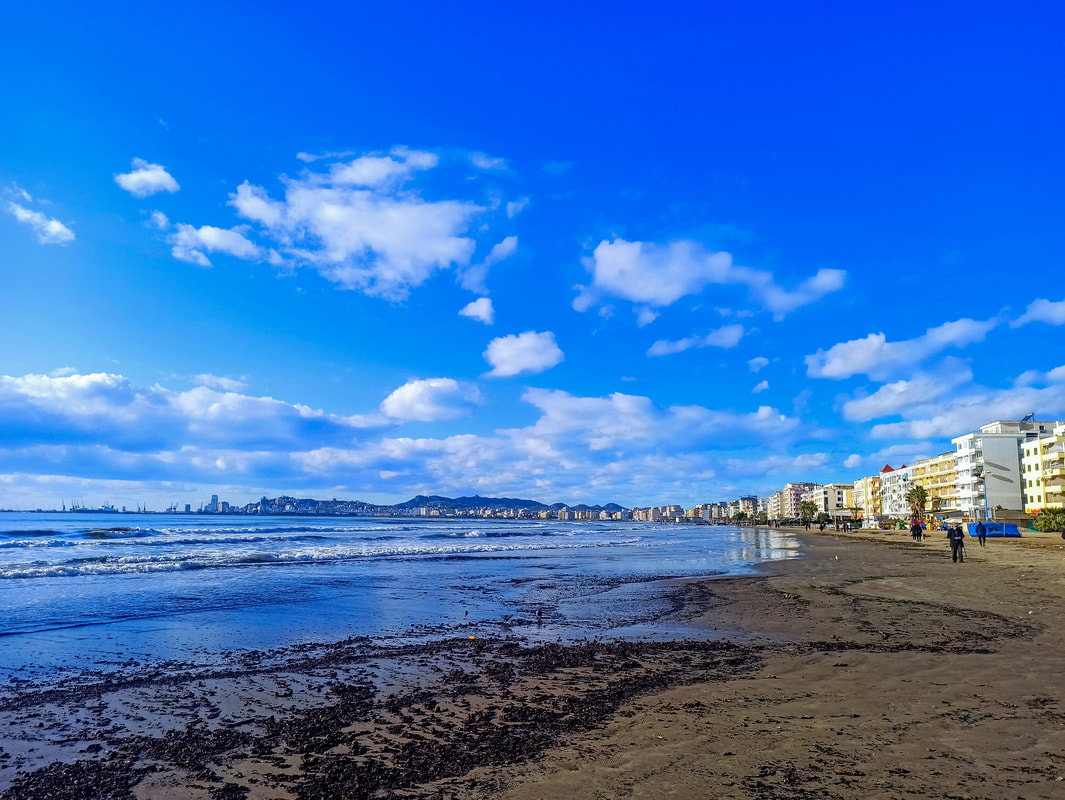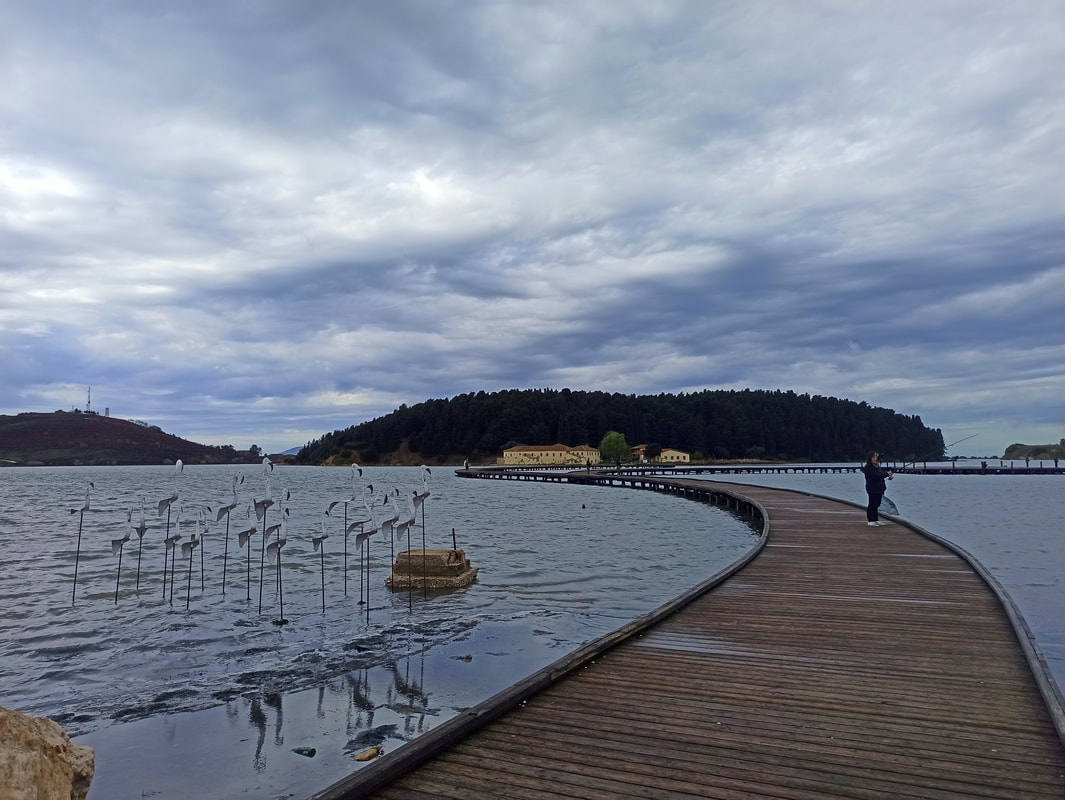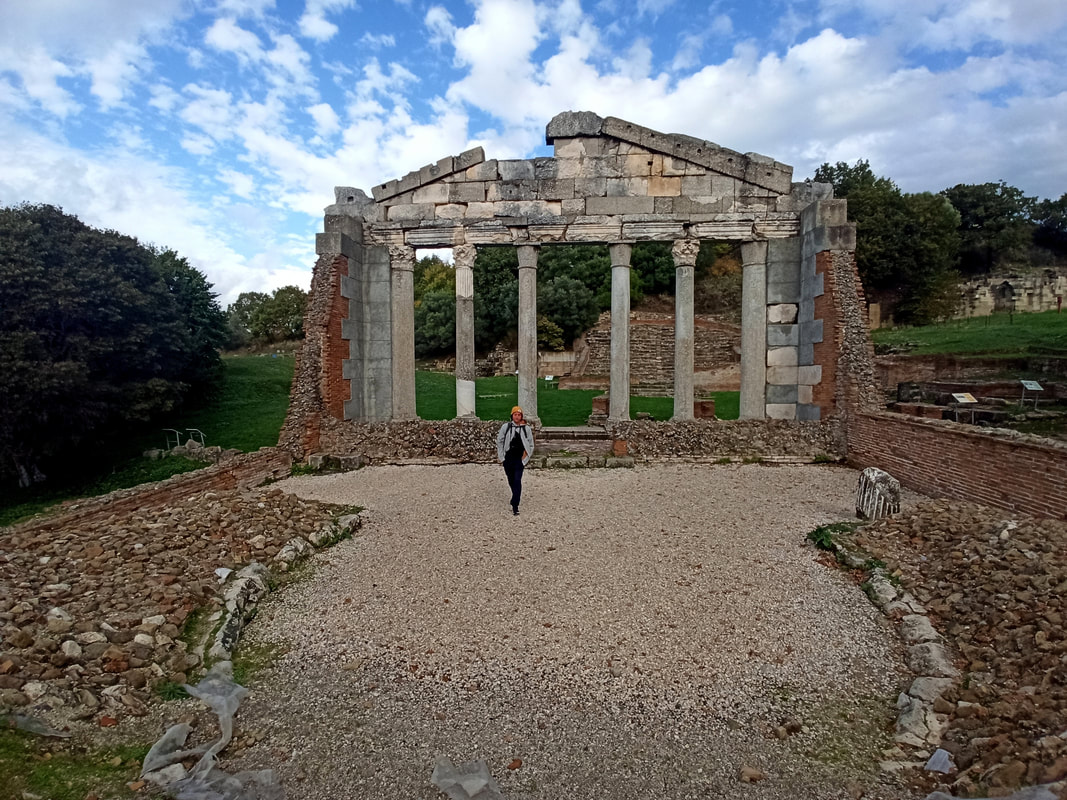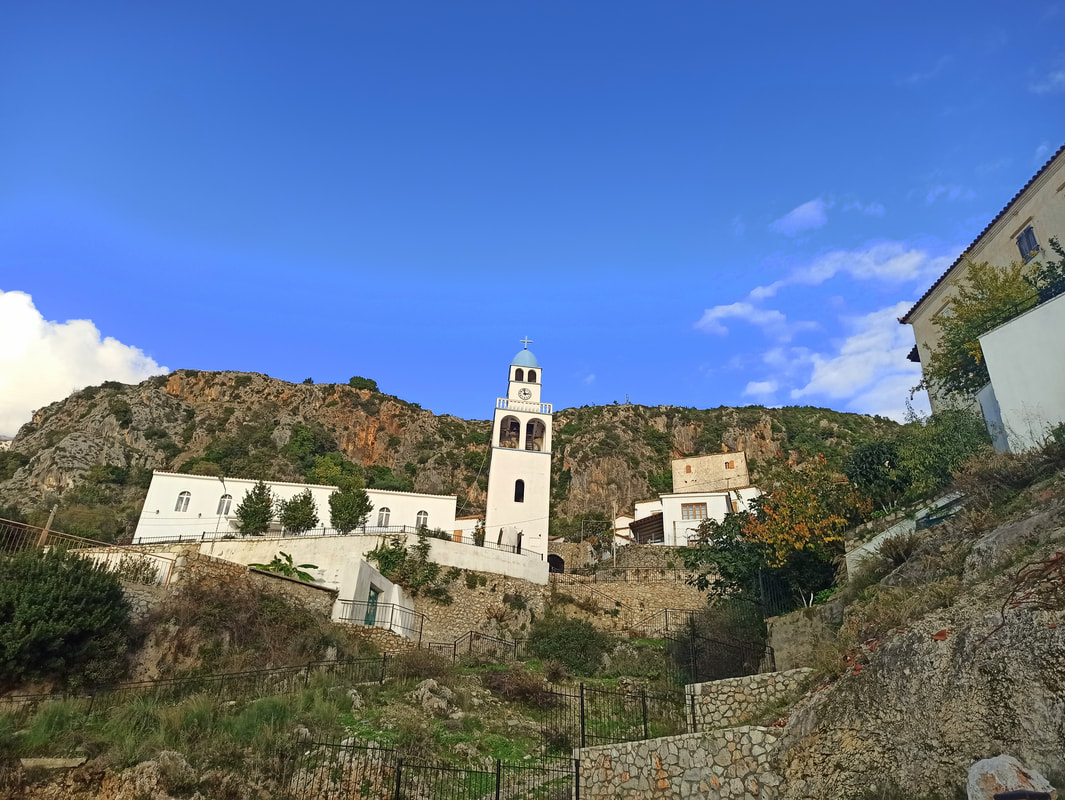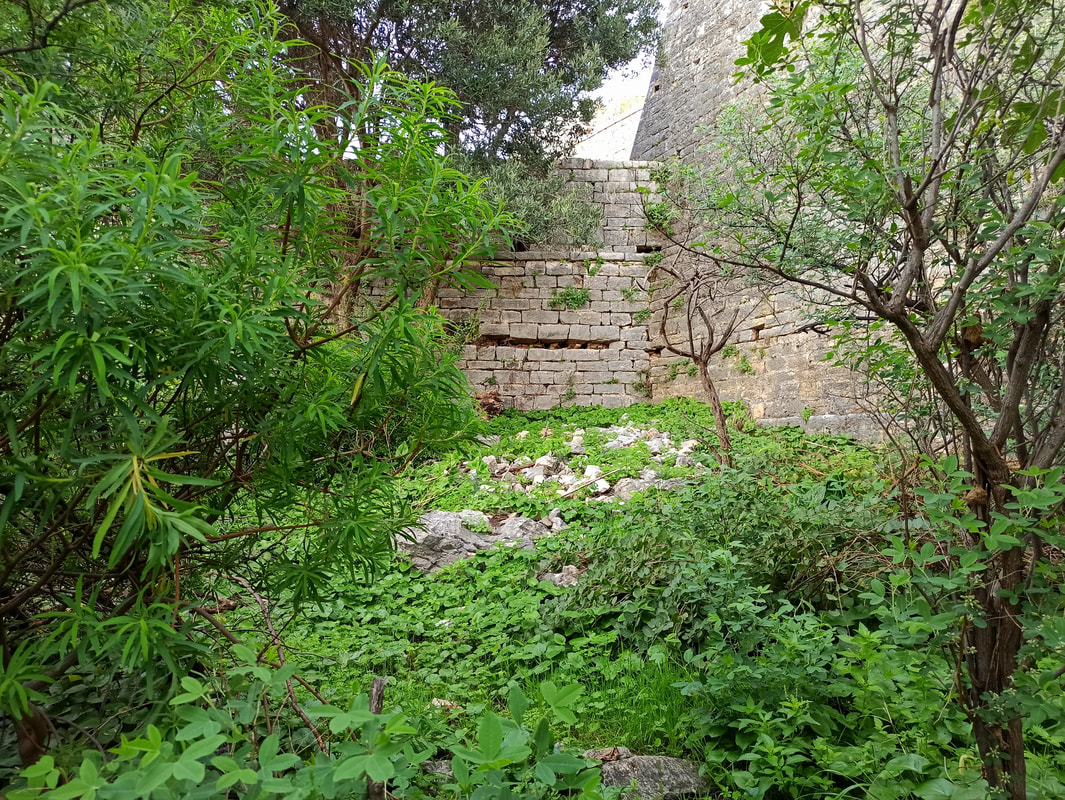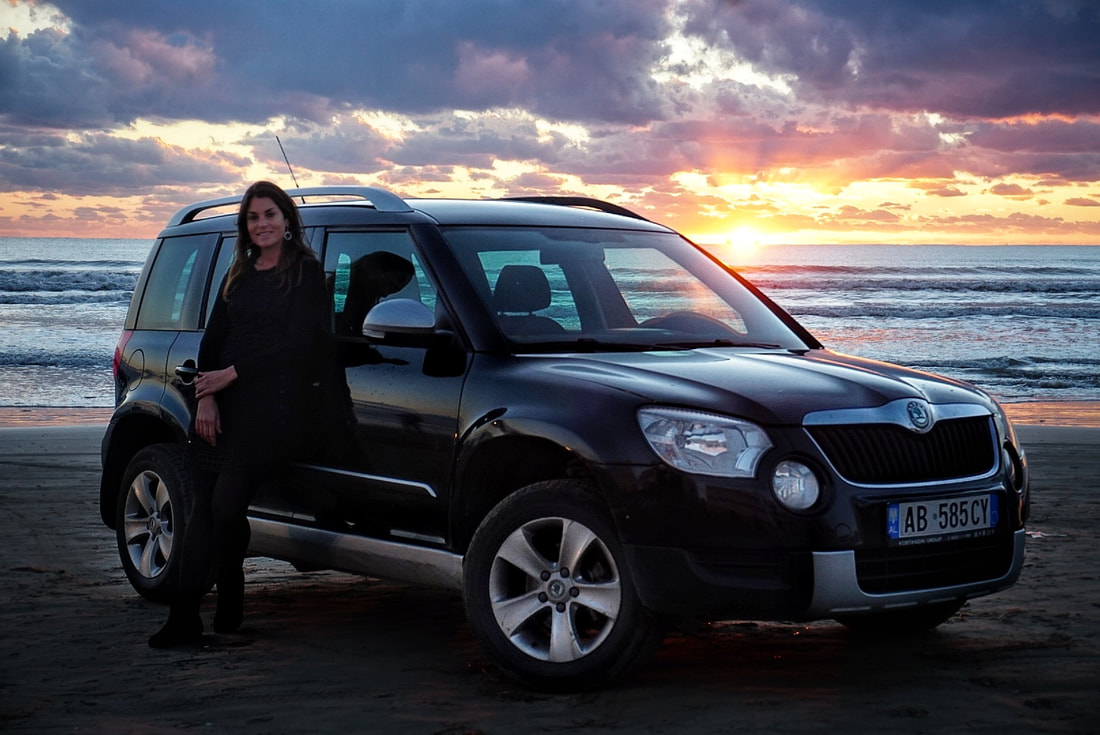Albania's Coastal Towns
Too busy to read now? No problem, save it for later!
Save on Get Pocket | Save in Browser Bookmarks| Save on Instapaper
Save on Get Pocket | Save in Browser Bookmarks| Save on Instapaper
Some of the highest mountains in the region, the greatest number of national parks in the entire Balkan and oh yeah, also a spectacular 450km-long coastline dotted with lagoons, protected birding areas and lavish sand beaches. You must be talking about Albania! Add to that a fierce infiltration of cultural heritage and ancient history, an overwhelming level of kindness and hospitality of the inhabitants and a mouth-watering local cuisine (even for vegetarians!)… How Albania is not entirely swarmed with tourist mobs is a mystery I have yet to solve. But in the meantime, let us enjoy the quietness of this relatively undiscovered destination… starting with a roadtrip along the coastline!
From North to South…
Durrës
Potentially the most visited beach town of Albania is Durrës, if only for its convenient proximity to the capital Tirana. As a result, it’s massive. Forget your mental stereotypes about cute little coastal resorts… we’re dealing with Albania’s second most populous city here, home to the country’s biggest industrial port (and one of the largest of the entire Adriatic Sea). Needless to say, this goes hand in hand with a higher level of pollution, as humans truly suck in that regard.
That said, historically it might be one of the most interesting coastal destinations. After being inhabited by the Illyrians, the city as we know it was founded by Greek colonists from Corinth and Corcyra under the name of Epidamnos. Subsequently the Illyrians regained control, to be beaten to it by the Romans, who renamed it Dyrrachium. This is a period when the city truly flourished as an integral part of the Roman / Byzantine Empire, when Durrës formed the official start of the Via Egnatia (part of the Via Appia) cutting straight through the Balkans towards Constantinople. Also in the Middle Ages, Durrës was contested terrain… the Ottomans eventually prevailed over the Bulgarians and Venetians and ruled the city for over 400 years (1501-1912). Luck truly started running out in 1926, when an earthquake demolished most of the city. And whatever was rebuilt afterwards was destroyed once again in WWII, due to heavy Allied bombing of this Nazi-occupied area. Subsequently, communist leader Enver Hoxha laid his hands on Durrës, rebuilding it with the focus on heavy state-owned industries*. As you can imagine, that didn’t do much good for its overall looks. However, at the start of the 21st century attempts of revitalization have been made, and the Amphitheatre of Durrës (souvenir from the Roman times) was pushed forward on the Albanian tentative list for UNESCO World Heritage Sites. Is Durrës about to relive some of its former glory?
* Following the collapse of communist rule in 1990, Durrës became the centre of mass emigration out of Albania. Ships were hijacked to sail to Italy at gunpoint. In the first month, over 20,000 people migrated to Italy in this manner.
From North to South…
Durrës
Potentially the most visited beach town of Albania is Durrës, if only for its convenient proximity to the capital Tirana. As a result, it’s massive. Forget your mental stereotypes about cute little coastal resorts… we’re dealing with Albania’s second most populous city here, home to the country’s biggest industrial port (and one of the largest of the entire Adriatic Sea). Needless to say, this goes hand in hand with a higher level of pollution, as humans truly suck in that regard.
That said, historically it might be one of the most interesting coastal destinations. After being inhabited by the Illyrians, the city as we know it was founded by Greek colonists from Corinth and Corcyra under the name of Epidamnos. Subsequently the Illyrians regained control, to be beaten to it by the Romans, who renamed it Dyrrachium. This is a period when the city truly flourished as an integral part of the Roman / Byzantine Empire, when Durrës formed the official start of the Via Egnatia (part of the Via Appia) cutting straight through the Balkans towards Constantinople. Also in the Middle Ages, Durrës was contested terrain… the Ottomans eventually prevailed over the Bulgarians and Venetians and ruled the city for over 400 years (1501-1912). Luck truly started running out in 1926, when an earthquake demolished most of the city. And whatever was rebuilt afterwards was destroyed once again in WWII, due to heavy Allied bombing of this Nazi-occupied area. Subsequently, communist leader Enver Hoxha laid his hands on Durrës, rebuilding it with the focus on heavy state-owned industries*. As you can imagine, that didn’t do much good for its overall looks. However, at the start of the 21st century attempts of revitalization have been made, and the Amphitheatre of Durrës (souvenir from the Roman times) was pushed forward on the Albanian tentative list for UNESCO World Heritage Sites. Is Durrës about to relive some of its former glory?
* Following the collapse of communist rule in 1990, Durrës became the centre of mass emigration out of Albania. Ships were hijacked to sail to Italy at gunpoint. In the first month, over 20,000 people migrated to Italy in this manner.
Going for a swim in Durrës, you say? Be careful with the weever fish! I had the unique experience to spend some hours in an Albanian hospital after being stung by one in the foot, after which it tripled in size. The pain is downright excruciating… I don't want that to happen to you!
Vlorë
Another big coastal town to be added to the list! And with a similar history to that of Durrës: It was also founded as an Ancient Greek colony (under the name Aulon), conquered by the Romans / Byzantines, Normans, Venetians and eventually the Ottomans… and it experienced similar destructions by WWII and the communist industrial focus under Hoxha, specifically tied to the submarine base located in this city. However, even though Vlorë has the same urbanized, slightly unattractive feel to it, its surroundings are all the more appealing! The area is encircled by the foothills of the Ceraunian Mountains and dotted by a number of protected natural areas, including the Karaburun-Sazan Marine Park and the Vjosa-Narte Delta. If you travel down from the north, you can add Divjaka-Karavasta National Park to that list, which you will pass along the way. Also culture vultures are served at their beck and call, with sights such as the St. Mary’s Monastery on Zvërnec Island (connected to the mainland by a bridge), the Illyrian Kaninë Castle overlooking the Vlorë Bay, as well as the archaeological site of the Ancient Greek and later Roman trade colony Apollonia* (further op north close to Fier). Reminders of Vlorë as the epicentre of the “Albanian Renaissance,” eventually leading to the country’s independence from the Ottomans**, can be found in the National Museum of Independence as well as at the Independence Monument.
… You’ll almost forget you’re actually in a beach resort! Don’t forget to give yourself a break as well, and lay back on Plazi i Vjeter Beach, Narta Beach, Hidrovor Beach and Plazhi i Semanit Beach. Enjoy that Mediterranean climate Vlorë is blessed with!
* Read more information about Apollonia in the Berat article!
** The Declaration of Independence was signed at the Assembly of Vlorë on November 28th 1912.
Vlorë
Another big coastal town to be added to the list! And with a similar history to that of Durrës: It was also founded as an Ancient Greek colony (under the name Aulon), conquered by the Romans / Byzantines, Normans, Venetians and eventually the Ottomans… and it experienced similar destructions by WWII and the communist industrial focus under Hoxha, specifically tied to the submarine base located in this city. However, even though Vlorë has the same urbanized, slightly unattractive feel to it, its surroundings are all the more appealing! The area is encircled by the foothills of the Ceraunian Mountains and dotted by a number of protected natural areas, including the Karaburun-Sazan Marine Park and the Vjosa-Narte Delta. If you travel down from the north, you can add Divjaka-Karavasta National Park to that list, which you will pass along the way. Also culture vultures are served at their beck and call, with sights such as the St. Mary’s Monastery on Zvërnec Island (connected to the mainland by a bridge), the Illyrian Kaninë Castle overlooking the Vlorë Bay, as well as the archaeological site of the Ancient Greek and later Roman trade colony Apollonia* (further op north close to Fier). Reminders of Vlorë as the epicentre of the “Albanian Renaissance,” eventually leading to the country’s independence from the Ottomans**, can be found in the National Museum of Independence as well as at the Independence Monument.
… You’ll almost forget you’re actually in a beach resort! Don’t forget to give yourself a break as well, and lay back on Plazi i Vjeter Beach, Narta Beach, Hidrovor Beach and Plazhi i Semanit Beach. Enjoy that Mediterranean climate Vlorë is blessed with!
* Read more information about Apollonia in the Berat article!
** The Declaration of Independence was signed at the Assembly of Vlorë on November 28th 1912.
Orikum
I needed a short break from an intense travel itinerary, and Orikum was the right place for it. There isn’t much going on… nothing at all actually in off-season. But that is sometimes just what you need. Truth being told, Orikum Beach isn’t that great… it’s just a long, slim stretch of pebble stone coastline. You can find much better in a country like Albania. Plus, the Karaburun Reserve* alongside the bay may seem like a pleasant natural getaway at first glance, but as it’s an inaccessible military base... unless you visit the Archaeological Site of Orikos, which is located on these military grounds (passport needed). The city is believed to be founded mid-8th Century BC by the Greek Euboeans, blown off their planned route by violent winds on their way home from Troy. However, the archaeological foundations don’t precede the 6th Century BC. Originally an island and later connected to the mainland, this harbour settlement turned into a Roman base during their wars with the Illyrians and Macedonia, and was eventually taken by Julius Caesar. Nowadays, this rather obscure and hardly-visited acropolis can still be seen by the public, although a large part lies underwater. While there, you can secretly deviate from the archaeological sights to check out the abandoned military naval base Pasha Liman. It used to be the only Soviet Base in the Mediterranean and the focal point of the Soviet-Albanian conflict in 1961, when Albania pulled out of the Warsaw Pact.
End the day on a lighter note: With a very affordable wine tasting at Dukat Winery, accompanied by an outright lip-smacking food platter. Best cuisine I had the pleasure to taste in Albania, period.
* Still craving for some nature? The Llogara National Park is located just south of Orikum. That said, it’s more a drive-through coastal area instead of a trail-loaded hiking spot. Very scenic, though.
I needed a short break from an intense travel itinerary, and Orikum was the right place for it. There isn’t much going on… nothing at all actually in off-season. But that is sometimes just what you need. Truth being told, Orikum Beach isn’t that great… it’s just a long, slim stretch of pebble stone coastline. You can find much better in a country like Albania. Plus, the Karaburun Reserve* alongside the bay may seem like a pleasant natural getaway at first glance, but as it’s an inaccessible military base... unless you visit the Archaeological Site of Orikos, which is located on these military grounds (passport needed). The city is believed to be founded mid-8th Century BC by the Greek Euboeans, blown off their planned route by violent winds on their way home from Troy. However, the archaeological foundations don’t precede the 6th Century BC. Originally an island and later connected to the mainland, this harbour settlement turned into a Roman base during their wars with the Illyrians and Macedonia, and was eventually taken by Julius Caesar. Nowadays, this rather obscure and hardly-visited acropolis can still be seen by the public, although a large part lies underwater. While there, you can secretly deviate from the archaeological sights to check out the abandoned military naval base Pasha Liman. It used to be the only Soviet Base in the Mediterranean and the focal point of the Soviet-Albanian conflict in 1961, when Albania pulled out of the Warsaw Pact.
End the day on a lighter note: With a very affordable wine tasting at Dukat Winery, accompanied by an outright lip-smacking food platter. Best cuisine I had the pleasure to taste in Albania, period.
* Still craving for some nature? The Llogara National Park is located just south of Orikum. That said, it’s more a drive-through coastal area instead of a trail-loaded hiking spot. Very scenic, though.
Dhërmi
The most scenic coastal town on the list so far is most definitely Dhërmi, closely followed in magnificence by Vuna just down the road. It honestly doesn’t get any dreamier than this. Traditional Albanian architecture dramatically creeps up the steep slopes of the Ceraunian Mountains, while the Ionian Sea stretches out in front of its shadows. Dhërmi, tightly related to its Greek inheritance, truly offers the best of both natural worlds, with the perfect cultural topping to finish it off. In the town you can admire eye-pleasing residences as well as the colorful selection of churches and monasteries, whereas once you descend down the cliffs the Pirate’s Cave, Bay of Grama and Canyon of Gjipe can be explored. Oh, and don’t forget to grab that tan on the Dhërmi or Grammata Beach!
The most scenic coastal town on the list so far is most definitely Dhërmi, closely followed in magnificence by Vuna just down the road. It honestly doesn’t get any dreamier than this. Traditional Albanian architecture dramatically creeps up the steep slopes of the Ceraunian Mountains, while the Ionian Sea stretches out in front of its shadows. Dhërmi, tightly related to its Greek inheritance, truly offers the best of both natural worlds, with the perfect cultural topping to finish it off. In the town you can admire eye-pleasing residences as well as the colorful selection of churches and monasteries, whereas once you descend down the cliffs the Pirate’s Cave, Bay of Grama and Canyon of Gjipe can be explored. Oh, and don’t forget to grab that tan on the Dhërmi or Grammata Beach!
Himarë
The architecture dramatically changes once you arrive at Himarë. Less traditional, back to modern. That said, Himarë definitely isn’t an unpleasant destination. The bilingual town (Albanian-Greek) is scattered around a long strip of sand beach, tucked in by a vibrant boulevard full of nightlife and restaurants. On top of that, the longest beach of the country, the 7-km Borsh Beach, starts 14km south of Himarë and therefore makes for a convenient daytrip. Another interesting sight can be found only 8km down south: the Ali Pasha Fortress at Porto Palermo, declared a cultural monument. Dating from the early 19th century, the castle was initially located on a separate island just off the coast, only later purposely connected to the mainland. The limestone castle was built with the help of engineers from the French military, who were according to legend immediately assassinated after the construction had been completed. A visit costs 300lek… or you can easily climb the wall on the left side (see right/lower photo).
The architecture dramatically changes once you arrive at Himarë. Less traditional, back to modern. That said, Himarë definitely isn’t an unpleasant destination. The bilingual town (Albanian-Greek) is scattered around a long strip of sand beach, tucked in by a vibrant boulevard full of nightlife and restaurants. On top of that, the longest beach of the country, the 7-km Borsh Beach, starts 14km south of Himarë and therefore makes for a convenient daytrip. Another interesting sight can be found only 8km down south: the Ali Pasha Fortress at Porto Palermo, declared a cultural monument. Dating from the early 19th century, the castle was initially located on a separate island just off the coast, only later purposely connected to the mainland. The limestone castle was built with the help of engineers from the French military, who were according to legend immediately assassinated after the construction had been completed. A visit costs 300lek… or you can easily climb the wall on the left side (see right/lower photo).
Sarandë / Ksamil
Sarandë and Ksamil are basically an extension of one another… with the main difference that Ksamil has all the character that Sarandë lacks. I guess it depends on personal taste (with a sharp division between good and bad taste – okay I’ll zip it). Sarandë is “where the party’s at,” providing a more developed urban area cut through by a busy, swirling main street full of bars and traffic (in fact, the traffic situation in this town is incredibly frustrating, forming a labyrinth of construction sites and dead ends). The town attracts mainly cruiseship-tourism, lured in by the deep blue waters of the Mediterranean and the 300+ sunny days a year. That said, these same blue waters and sunny days can be found in Ksamil, as well as the “main attraction of Sarandë”: Butrint National Park. In fact, Ksamil is located right inside of the national park! The protected area includes wetlands, salt marshes, open plains, islands and freshwater lakes. Walking around Ksamil you can find the Lagoon of Butrint on one side of you, while the Ionian Sea stretched out on the other, with fantastic views over numerous islands… including the Greek island of Corfu which you can basically reach swimming. During that swim, you might be accompanied by dolphins and sea turtles, who frequent the coastal waters. Come on! Can it get any better?! Yes, my lord/lady, it can: Butrint also includes one of the country’s most important archaeological sites, including a Roman Theatre, Aqueduct and various temples and castles. Oh, and it's a UNESCO World Heritage Site as well - * drops mic*.
Sarandë and Ksamil are basically an extension of one another… with the main difference that Ksamil has all the character that Sarandë lacks. I guess it depends on personal taste (with a sharp division between good and bad taste – okay I’ll zip it). Sarandë is “where the party’s at,” providing a more developed urban area cut through by a busy, swirling main street full of bars and traffic (in fact, the traffic situation in this town is incredibly frustrating, forming a labyrinth of construction sites and dead ends). The town attracts mainly cruiseship-tourism, lured in by the deep blue waters of the Mediterranean and the 300+ sunny days a year. That said, these same blue waters and sunny days can be found in Ksamil, as well as the “main attraction of Sarandë”: Butrint National Park. In fact, Ksamil is located right inside of the national park! The protected area includes wetlands, salt marshes, open plains, islands and freshwater lakes. Walking around Ksamil you can find the Lagoon of Butrint on one side of you, while the Ionian Sea stretched out on the other, with fantastic views over numerous islands… including the Greek island of Corfu which you can basically reach swimming. During that swim, you might be accompanied by dolphins and sea turtles, who frequent the coastal waters. Come on! Can it get any better?! Yes, my lord/lady, it can: Butrint also includes one of the country’s most important archaeological sites, including a Roman Theatre, Aqueduct and various temples and castles. Oh, and it's a UNESCO World Heritage Site as well - * drops mic*.
The best part of discovering the Albanian coast wasn’t just checking out the separate beach towns… it was the entire roadtrip along it. Yes, of course, you can take the (off-season rather unreliable) public transport options from A to B and on to C, but the feeling is simply not the same. The coastal roads of Albania take you right through national parks, along picturesque harbours and passed dazzling look-out points. It’s hard to suppress the feeling to not pull over every 5 minutes, your hands itching to photograph every panorama, sunset and crisp beachline. Hands down your best bet is Rental Shkodra, who provide solid vehicles at budget-friendly prices. In line with the overall warm hospitality you’ll experience everywhere in Albania, expect top-notch customer service accompanied with a friendly smile. Time for a roadtrip, time for Rental Shkodra!
Opening Photo & Car Photo by Miles Watson Photography.
Quick Budget Fact Overview
Albania Facts
History Recap
1000BC: Illyrians (Indo-European tribesmen). Country name from an Illyrian tribe: Arber / Albanoi. 165BC: Illyria under control Romans. 44BC: Caesar began building a colony at Butrint. 1-100: Christianity. 300-700: Goths, Huns, Avars, Serbs, Croats, and Bulgars successively invade Illyrian lands. 395: Division of Roman Empire à present-day Albania under Eastern Byzantine Empire. 700-800: Slav tribes settle. 1054: Roman and Orthodox Churches split (Orthodox don’t accept papal authority Rome). 1100-1200: Serbs occupied parts of Albania. 1204: Venice won control over most of Albania, but Byzantines regained control of south. 1385: Albanian ruler invited Ottoman forces to intervene against a rival in Battle of Savra. Start of slow expansion Ottoman Rule. 1403: Gjergj Kastrioti born: Albanian hero known as Skanderbeg who organized resistance to Ottomans in Krujë (repulsed 12 invasions) and kept Albania independent for 20+ years. ’68: Skanderbeg died and the Turks absorbed Albania into the Ottoman Empire. Conversion to Islam. 1614: Ottoman general Sulayman Pasha named Tehran (later Tirana) as the capital, after Iran’s. 1822: Albanian leader Ali Pasha was assassinated by Ottomans for promoting autonomy. ’61: First school known to use Albanian language opened in Shkodër. ‘78: Treaty of San Stefano / Treaty of Berlin: Ending Russo-Turkish War (Ottoman Empire lost numerous territories) & Divided Balkans among European powers. 1910: Mother Teresa born to an ethnic Albanian family in Skopje, Macedonia. ’12: First Balkan War (Balkan countries against Ottomans). Nov 28: Independence of Albania declared. ‘13: End First Balkan War with Treaty of London, beginning of Second Balkan War. Albania recognized as independent state: Demographics were ignored, half Albanian inhabited territories divided among Montenegro, Serbia and Greece. 1914-’18: WWI - Italian occupation. ’28: Albania kingdom under Zogu / parliament dissolved.’37: Italian occupation. ’39: WWII: Italian invasion and annexation (King Zogu fled to Greece). ‘41: Enver Hoxha becomes head of new Communist Party. ’43: German forces invade à ’44: withdraw after Communist resistance. Hoxha new leader: Brutal Stalinist rule for 40 years, mass murders, people being unable to enter or exit Albania. SU and China ties broken over ideologist ideas.’67: Limitation religious activity; Albania declared world's first atheist state. ’85: Hoxha dies. ’89: Communist rule in Eastern Europe collapses. ’90: Albanians granted right to travel abroad. Many flee. ’98: Kosovaran refugee exodus into Albania. ’03: First talks towards EU membership. ’09: Joins NATO and formally applies for EU membership --> rejected in ’10.
Budget Bites
Sleep Cheap
Mama Said
Quick Budget Fact Overview
Albania Facts
- Capital: Tirana (Tiranë)
- Population: ± 2.8 mln
- Language: Albanian
- Sq km: ± 28.748
- Currency: Lek (ALL - L)
- Electricity Outlet: C /F /E, 230v, 50Hz (standard European – check here)
- Country Code Phone: +355
- Emergency Phone: 112 (general), 127 (ambulance), 128 (fire), 112 (police)
- Visa: Check out the visa requirements here
- Vaccinations: Covid / Hep-A / Hep-B / Routine Vaccines
History Recap
1000BC: Illyrians (Indo-European tribesmen). Country name from an Illyrian tribe: Arber / Albanoi. 165BC: Illyria under control Romans. 44BC: Caesar began building a colony at Butrint. 1-100: Christianity. 300-700: Goths, Huns, Avars, Serbs, Croats, and Bulgars successively invade Illyrian lands. 395: Division of Roman Empire à present-day Albania under Eastern Byzantine Empire. 700-800: Slav tribes settle. 1054: Roman and Orthodox Churches split (Orthodox don’t accept papal authority Rome). 1100-1200: Serbs occupied parts of Albania. 1204: Venice won control over most of Albania, but Byzantines regained control of south. 1385: Albanian ruler invited Ottoman forces to intervene against a rival in Battle of Savra. Start of slow expansion Ottoman Rule. 1403: Gjergj Kastrioti born: Albanian hero known as Skanderbeg who organized resistance to Ottomans in Krujë (repulsed 12 invasions) and kept Albania independent for 20+ years. ’68: Skanderbeg died and the Turks absorbed Albania into the Ottoman Empire. Conversion to Islam. 1614: Ottoman general Sulayman Pasha named Tehran (later Tirana) as the capital, after Iran’s. 1822: Albanian leader Ali Pasha was assassinated by Ottomans for promoting autonomy. ’61: First school known to use Albanian language opened in Shkodër. ‘78: Treaty of San Stefano / Treaty of Berlin: Ending Russo-Turkish War (Ottoman Empire lost numerous territories) & Divided Balkans among European powers. 1910: Mother Teresa born to an ethnic Albanian family in Skopje, Macedonia. ’12: First Balkan War (Balkan countries against Ottomans). Nov 28: Independence of Albania declared. ‘13: End First Balkan War with Treaty of London, beginning of Second Balkan War. Albania recognized as independent state: Demographics were ignored, half Albanian inhabited territories divided among Montenegro, Serbia and Greece. 1914-’18: WWI - Italian occupation. ’28: Albania kingdom under Zogu / parliament dissolved.’37: Italian occupation. ’39: WWII: Italian invasion and annexation (King Zogu fled to Greece). ‘41: Enver Hoxha becomes head of new Communist Party. ’43: German forces invade à ’44: withdraw after Communist resistance. Hoxha new leader: Brutal Stalinist rule for 40 years, mass murders, people being unable to enter or exit Albania. SU and China ties broken over ideologist ideas.’67: Limitation religious activity; Albania declared world's first atheist state. ’85: Hoxha dies. ’89: Communist rule in Eastern Europe collapses. ’90: Albanians granted right to travel abroad. Many flee. ’98: Kosovaran refugee exodus into Albania. ’03: First talks towards EU membership. ’09: Joins NATO and formally applies for EU membership --> rejected in ’10.
Budget Bites
- Local Dishes: Fërgesë (stew); Byrek (stuffed pastry); Tavë Kosi (baked lamb/chicken in yoghurt); Kackavall Në Furrë Me Domate (baked cheese with tomatoes); Speca Me Gjize (cheese-stuffed bell peppers); Speca te Mbushur me Oriz (stuffed bellpeppers with rice); Gjel Deti me Përshesh (baked turkey with bread mash); Peshk Dhe Pherime Ne Tave (fish and veg); Flija (baked crepes); Jani Me Fasule (white bean soup); Qofte (lamb meat balls); Tave Mishi (mixed grill); Sarme (cabbage rolls stuffed with rice and meat); Qifqi (fried rice balls); Pispili (cornbread with leek); Trilece (cake); Ashure (dessert); Petulla (fried dough).
- The Veg Situation: Going vegetarian is rather easy in Albania, but going vegan is next to impossible as milk / egg is in all that remains. There are luckily quite some local vegetarian dishes, some already explained above. Local veg dishes: Fërgesë Verorë (summer version); Byrek (choose cheese or spinach); Kackavall Në Furrë Me Domate; Speca Me Gjize; Speca te Mbushur me Oriz; Flija; Jani Me Fasule; Tave Mishi (vegan); Jufka (pasta cooked in butter); Ima lam Bajalldi (eggplant cooked in oven - vegan); Turli (vegetables stew - vegan); Tarator (cold soup); Salce Kosi (yoghurt sauce); Qifqi; Pispili; Trilece; Ashure; Petulla.
- National Drink: Rakia. Some local beer brands include Birra Korca, Bira Tirana and Birra Stela. Albania has wine production, but not as prominent as in Montenegro or Macedonia.
Sleep Cheap
- Hostels / Hotels: are relatively cheap in Albania compared to the rest of Europe, although more expensive than in other Balkan countries such as Montenegro, Bosnia and Herzegovina and Serbia. I personally found the best deals on Booking.com, which is generally cheaper than Air BnB listings here. If you use it often enough, Genius-discounts are applied. A nuisance in Albania is that once you booked, that doesn’t necessarily mean it’s actually confirmed: In my case, often the booking was immediately denied by the owner (or you’re not informed at all and show up in front of a closed door): Always call/email to confirm 100%. Payment generally happens on-site in cash.
- Couchsurfing: allows you to stay with locals. Nowadays it has a moderate sign-up cost (unless you put a third-world country as homebase), but paying extra for verification is unnecessary: Positive reviews are way more important. Once active, there are no costs for staying at someone’s house. In order to get accepted, make sure to write an elaborate review explaining why you applied to this specific profile and think you and your potential host are a good match (copy-pastes tend to be ignored).
- Housesitting: is an amazing exchange allowing you to stay short- or long-term in somebody’s house, while looking after their property and pets. There are many different websites, most of them paid, the main one being Trusted Housesitters… but once you landed a sit, the subscription fee pays itself back quickly. ‘
Mama Said
- Safety: Don’t believe the gossip of people who never actually been here: Albania is safe! Crime rates are low and the level of hospitality is heart-warming. People go out of their way to make you feel welcome and assist you in any way they can. Of course, like everywhere in the world, use your common sense: Don’t walk alone in remote areas after sunset, don’t take valuables along etc.
- Tap Water: is drinkable.
- The only bank that doesn’t charge an ATM fee is Credins Bank.
- Don’t speak Albanian? Your Italian language skills might help! Due to long, recent occupation periods by Italians (check the History Recap) many Albanians speak some basic Italian.
In order to support the travelers’ community, I spend many hours per week to adequately document all information and advices for prospective visitors, accompanied by a (hopefully) entertaining insight into my personal observations and experiences. This service is and will remain free. However, if you voluntarily want to make a contribution and support my travels and thus the creation of new stories and information supply, here is the button you’re looking for:
Related:
- Get your Albania itinerary ready: Berat, Gjirokastër, Korcë / Ohrid Lake, Theth, Shkodër, Tirana, Mount Korab & the coast!
- Check out Budget Bucket List's FAVORITE HIKING DESTINATIONS worldwide!
- Visit Balkan's finest: Montenegro's National Parks Blog, Kotor Bay & Lovcen NP and Cetinje, Podgorica, Prokletije NP and Montenegro's Coastal Towns Blog
- 10 typical Dutch celebrations no traveller should miss out on
- History preserved: Time capsule of Romanian culture Maramures
- Be about Bulgaria: Check off Bansko, Belogradchik, Plovdiv, Sofia and of course Veliko Tarnovo!
- Destinations of Hungary: Balaton Lake, Budapest and Szekesfehervar
- Where modern meets classic: Vilnius, Lithuania
- 8 ways to save money in Vienna, Austria
- Explore Cyprus: Check out the Cyprus Nature, Cyprus Top-5 Cities and the North Cyprus Blogs!
- German gems: Aachen & Frankfurt am Main
- Europe's best skiing & hiking: Get your ass over to jaw-dropping Switzerland!
- Budget Bucket List hitchhike trip to... Kosovo!
- Unravel the mysteries of Serbia
- Discover the splendours of Turkey: Istanbul on a Budget & Reasons to visit Edirne
- Get deep into Greece: Athens, Delphi, Arachova, Mount Parnassos NP, Epirus, Meteora, Thessaloniki & Volos
- Archeological treasures, UNESCO sights and Greece's roughest nature: Explore the Peloponnese!
- Get your Albania itinerary ready: Berat, Gjirokastër, Korcë / Ohrid Lake, Theth, Shkodër, Tirana, Mount Korab & the coast!
- Check out Budget Bucket List's FAVORITE HIKING DESTINATIONS worldwide!
- Visit Balkan's finest: Montenegro's National Parks Blog, Kotor Bay & Lovcen NP and Cetinje, Podgorica, Prokletije NP and Montenegro's Coastal Towns Blog
- 10 typical Dutch celebrations no traveller should miss out on
- History preserved: Time capsule of Romanian culture Maramures
- Be about Bulgaria: Check off Bansko, Belogradchik, Plovdiv, Sofia and of course Veliko Tarnovo!
- Destinations of Hungary: Balaton Lake, Budapest and Szekesfehervar
- Where modern meets classic: Vilnius, Lithuania
- 8 ways to save money in Vienna, Austria
- Explore Cyprus: Check out the Cyprus Nature, Cyprus Top-5 Cities and the North Cyprus Blogs!
- German gems: Aachen & Frankfurt am Main
- Europe's best skiing & hiking: Get your ass over to jaw-dropping Switzerland!
- Budget Bucket List hitchhike trip to... Kosovo!
- Unravel the mysteries of Serbia
- Discover the splendours of Turkey: Istanbul on a Budget & Reasons to visit Edirne
- Get deep into Greece: Athens, Delphi, Arachova, Mount Parnassos NP, Epirus, Meteora, Thessaloniki & Volos
- Archeological treasures, UNESCO sights and Greece's roughest nature: Explore the Peloponnese!
